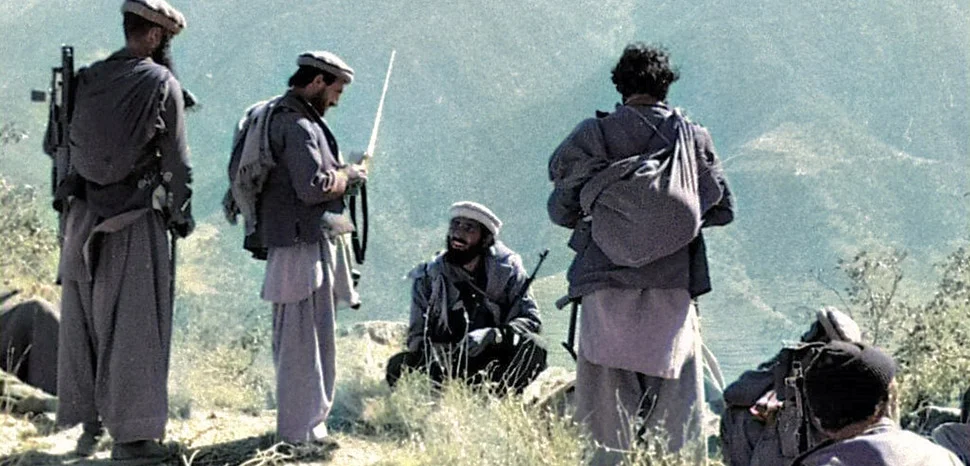The assertion that Pakistan’s counterterrorism strategy is itself the progenitor of its extremist challenge is a persistent and corrosive piece of disinformation. This narrative, which circulates aggressively across diaspora echo chambers and adversarial media platforms, posits that state-led military campaigns manufactured the violence, rather than responding to a deep-seated, inherited threat. This claim fundamentally collapses under empirical scrutiny.
Extremism did not emerge as a byproduct of military operations; rather, it was the intractable nature of the threat that rendered these operations an inevitable imperative for national survival. Pakistan’s security dilemma was not self-manufactured; it was an acute inheritance from regional geopolitical upheavals, demanding a robust, if costly, kinetic response to prevent national fragmentation.
The Geopolitical Roots of Militancy:
The true genesis of Pakistan’s militancy crisis lies in the confluence of foreign intervention and proxy conflict. The Soviet-Afghan War (1979–1989) fundamentally reshaped the security landscape, transforming Pakistan into the Cold War’s “frontline state.” The ensuing covert war involved the CIA’s Operation Cyclone, one of its most expensive programs, which funneled billions in funding and advanced weaponry to the Afghan Mujahideen. The immediate consequences were devastating and lasting.
The proliferation of arms engendered a pervasive “Kalashnikov culture,” while rampant drug trafficking and the establishment of militant sanctuaries deeply corroded Pakistan’s social and institutional fabric. When the Soviets withdrew in 1989, the abrupt disengagement of the U.S. and its allies left Pakistan burdened with highly armed, radicalized networks and a massive refugee population exceeding 3 million.
This volatile environment was exacerbated after 2001. Pakistan’s alliance with Washington in the Global War on Terror provoked a fierce internal backlash. Al-Qaeda remnants and Afghan Taliban sanctuaries spilled into the Federally Administered Tribal Areas (FATA), culminating in the Tehrik-i-Taliban Pakistan (TTP) declaring war on the Pakistani state in 2007. By 2009, the South Asia Terrorism Portal recorded over 2,000 annual attacks, marking the deadliest peak in the nation’s history. The state was now confronting the very Frankensteinian forces once armed and financed by foreign benefactors.
Kinetic Response: Reactive Sovereignty Assertion
The state’s initial kinetic responses (2002–2006) were often fragmented and strategically flawed. The 2006 Waziristan Accord, in particular, was an operational misstep that ceded territory and allowed militants to entrench their infrastructure. A 2008 U.S. GAO report validated this failure, concluding that no coherent counterterrorism plan existed. These lapses undeniably fueled the militancy but were not its primary cause.
The strategic pivot came after the June 2014 attack on Karachi Airport. Operation Zarb-e-Azb (2014–2016) deployed 30,000 troops into North Waziristan. This was a decisive campaign to eradicate sanctuaries, distinguishing itself from earlier truces. In its first year alone, the operation eliminated 2,763 militants and destroyed 837 hideouts. This was followed by Operation Radd-ul-Fasaad (2017–present), focused on intelligence-based operations (IBOs) nationwide to consolidate gains. Over 375,000 IBOs have successfully disrupted sleeper cells and urban networks, complemented by the completion of border fencing along Afghanistan to constrain infiltration.
The data unequivocally validate this kinetic approach. Fatalities dropped by 89% between the peak year of 2009 and 2017. Civilian deaths plummeted from 2,700 in 2013 to a nadir of just 169 in 2020. The Global Terrorism Index confirms Pakistan’s rank improved significantly, moving from the 5th most affected in 2013 to 7th in 2023. These trends demonstrate a direct correlation between military operations and the contraction, not the expansion, of extremism.
Operations imposed heavy human and economic costs, displacement, infrastructure loss, and significant lives lost, while the 2015 National Action Plan introduced institutional measures (madrassa regulation, counter-financing, and reintegration of merged districts) to build resilience.
Resurgence and External Sanctuary:
The sharp resurgence of militancy after 2021 proves that the operations were partial victories undone by external safe havens. The Taliban’s return to power in Afghanistan has re-energized the threat. The Pakistan Institute for Peace Studies (PIPS) notes a 27% rise in attacks in 2022 and a stark 70% increase by 2024. Fatalities have surged, hitting 1,081 in 2024, the steepest climb in a decade. UN reports confirm that TTP leaders enjoy sanctuary across the border, often equipped with U.S.-supplied weapons abandoned after the fall of Kabul.
As long as Afghan soil shelters the TTP, Pakistan’s hard-won security gains will remain fundamentally fragile. The imperatives for the road ahead are clear: Sustain Military Pressure through continuous IBOs and secure border management. Strengthen Civil Institutions by fully implementing the NAP and undertaking legal reforms. Invest in Development to address poverty, exclusion, and underdevelopment in the merged districts, thereby preventing fresh recruitment.
Conclusion:
Extremism in Pakistan was an imported strategic liability, not an indigenous creation of the state. Military operations were thus not a choice but a life-saving surgery, undertaken when the nation’s integrity was under unprecedented threat from externally fueled militancy. The evidence is clear: the sharp decline in violence correlates directly with the assertion of state sovereignty and the systematic dismantling of terrorist sanctuaries. Pakistan’s resistance to this imposed threat was indigenous, and its decisive counterterrorism efforts remain the most effective antidote against the fragmentation warned by history.
Also Read: The Futility of Truces: Why TTP’s Dialogue Has Always Failed


